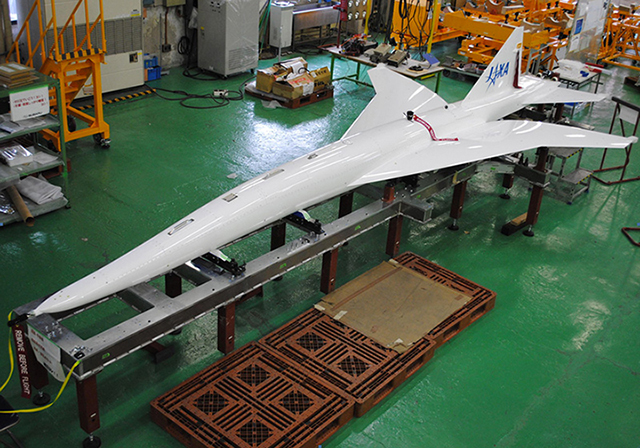Schedule of D-SEND#2
- The world’s first flight demonstration of sonic boom reduction technology
A critical challenge in realizing supersonic civil transport -
May 12, 2015 (JST)
Japan Aerospace Exploration Agency (JAXA)
The Japan Aerospace Exploration Agency (JAXA) decided to begin preparations to perform the third test of the second phase of the “Drop test for the Simplified Evaluation of Non-symmetrically Distributed sonic boom Project” (D-SEND#2) on June 29, 2015.
Technology to reduce sonic boom* generated by supersonic flight is one of the most critical issues in realizing supersonic civil transport in the future. Various studies on sonic boom reduction are currently being conducted across the globe, and the progress and status are to be reported to the 10th meeting of the Committee on Aviation Environmental Protection (CAEP/10) of the International Civil Aviation Organization (ICAO) scheduled in 2016 for the deliberation of formulating international standards on sonic boom for next generation supersonic transport.
The D-SEND project aims to demonstrate the validity of JAXA's original “low sonic boom design concept” through flight tests and to obtain data that can contribute to the formulation of global standards on sonic boom. Flight demonstration of the effect of boom shaping technology applied to both the nose and aft fuselage of the airplane is the first of its kind in the world.
The first phase (D-SEND#1) was implemented in May 2011 by successfully establishing an aerial sonic boom measurement system in the form of balloon drop test. In the D-SEND#2, a supersonic experimental airplane model, designed using JAXA's original “low sonic boom model concept” is to be flown at supersonic velocity by way of free falling from a balloon, during which generated sonic boom wave signatures are to be measured to confirm and validate the design concept.
The first test of D-SEND#2 held in August 2013 was not completed successfully since the test aircraft experienced an uncertain flight attitude after its separation from a balloon. Although JAXA’s sonic boom measurement system worked properly and captured the sonic boom, it was not from the expected nominal flight. After having taken various measures to fix the causes of abnormal flight, the second test was planned in August 2014. However, as meteorological conditions were not satisfied, JAXA was not able to release a balloon for the second test within the test period.
Based on this experience from last year, JAXA has been reviewing the requirements for a test and taking countermeasures to expand the opportunities as much as possible. As clearer prospects have been secured from these countermeasures, we will be carrying out preparations for the third test accordingly.
* Sonic boom is a phenomenon that generates thunder-like explosive sound, caused by shock waves associated with supersonic flight.
Third test of D-SEND#2: Outline
1. Test period
From June 29 to August 31, 2015 (Sweden Standard Time)
- The period is subject to change due to the preparation status.
- The decision to conduct the test will be finalized by coordinating with the Swedish Space Corporation (SSC), which operates the balloon according to weather conditions.
2. Test site
Sweden Esrange Space Center (Kiruna, Sweden)
3. Test sequence
Please see attached reference.
4. Others
The latest information and updates on D-SEND#2 are available via our website and Twitter. (In Japanese only)
- D-SEND#2 website: http://www.aero.jaxa.jp/spsite/d-send2/
- Twitter for JAXA Aeronautical Technology Directorate: https://twitter.com/jaxa_aero
(Attachment)
Test Sequence of D-SEND#2
The D-SEND#2 drop test is conducted at the Esrange Space Center, Sweden, using an experimental supersonic airplane model called “Silent SuperSonic Concept Model (S3CM:S-cube Concept Model)”. With JAXA's own low sonic boom design technology applied at the front and rear of the airplane, the test model is lifted by a balloon and separated in the air at an altitude of 30 kilometers. After accelerating into supersonic velocity during its free fall, the test model glides over the boom measurement system at Mach 1.3 with a flight path angle of 50 degrees, then a pressure waveform generated by the boom that propagates vertically toward the ground is measured.

D-SEND#2 drop test sequence

D-SEND#2 Silent SuperSonic Concept Model (S3CM)